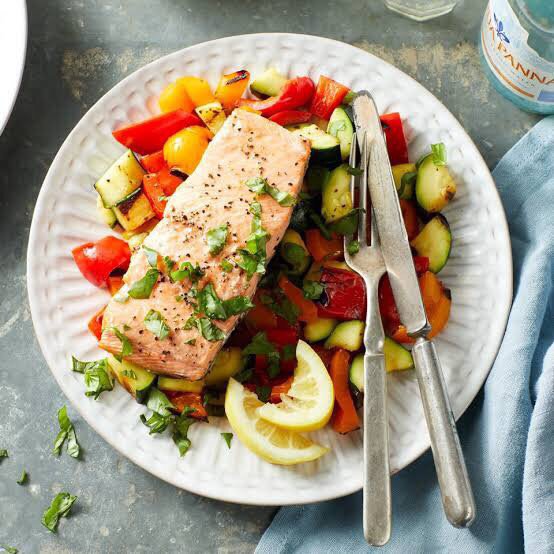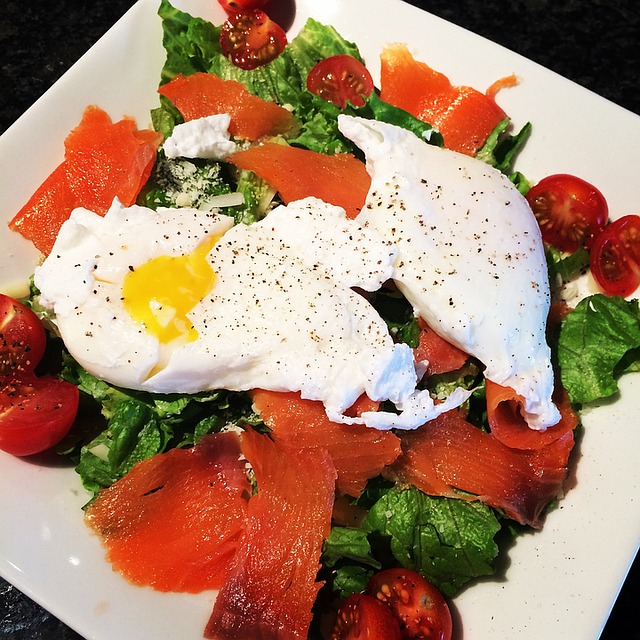
Paleo diet is not believed to prevent heart disease. While there are many benefits to the diet, some studies suggest that there is a risk of developing cardiovascular disease. Researchers looked at the effects of diet on arterial distensibility as well as plasma insulin during an oral diabetes tolerance test.
Increased risk of developing heart disease
A new study has shown that Paleo diets significantly increase the levels of a blood biomarker related to cardiovascular disease. Trimethylamine noxide or TMAO is a naturally occurring organic chemical that is made in the gut. A study of 44 Paleo diet participants and 47 who followed a traditional Australian diet found that people on the Paleo diet had higher levels of TMAO. This higher level of TMAO can increase your risk of developing heart disease.
Researchers from four Australian institutions discovered that Paleo dieters had elevated levels in a compound which is linked to heart disease. Trimethylamine Noxide is a compound that bacteria produces in the gut and is associated with the development of heart disease. Paleo diets also have lower levels beneficial bacteria. However further research is needed to determine how this affects heart health.
An increase in the risk of inflammation
There is a connection between a Paleo diet and heart disease. Paleo-eaters have higher levels interlukin-10 (a signaling molecule produced by immune cells). Research suggests that a lower level of interlukin-10 can indicate a greater risk for heart disease. While high levels of interlukin-10 might counteract inflammation and help protect blood vessels, more research is necessary to confirm the relationship.

Paleo means that you avoid grains, legumes, vegetable oils, and other processed foods. This is a good base for many heart-healthy diets but it's high in fat. It contains both saturated and trans fats, and it is often expensive. Due to its high intake of meat and dairy products, Paleo is not affordable for everyone. These meats can be prohibitive for those on a low income.
Increased risk of kidney disease
Although the Paleo diet is very popular with health-conscious people, there are still some issues. The diet emphasizes meat because it is high cholesterol. Paleo also discourages the intake of refined sugars which are full of empty calories. These sugars have also been linked to obesity as well heart disease and diabetes. The Paleo diet discourages legumes but encourages meat.
Paleo diets not only increase fiber intake, but they also help reduce waistline. High fiber content in the diet helps lower cholesterol levels. Avoid egg yolks as they are a good source of phosphorus. High-quality protein is a better option for your kidney health than egg yolks. A lot of water can help decrease the protein levels in your urine. The risk of developing kidney disease is still there.
Increased risk of developing heart disease among women
Paleo has gained popularity for many reasons. It has many heart-healthy and beneficial benefits. It is based upon the Mediterranean diet and Nordic diets. Due to its high animal fat allowance, it contains high amounts of saturated and transfats. High levels of beef consumption are associated with increased heart disease risk. However, a Paleo diet is not for everyone, and it can be expensive for low-income individuals.
Studies show that saturated fats and cholesterol are not associated with an increased chance of heart disease in Paleo-eating women. Although the Paleo diet eliminates some junk food, it does not reduce saturated fat. A recent review of nutritional information associated with heart disease found that there wasn't enough evidence linking saturated fat to heart diseases. A paleo diet contains fewer vegetables than the standard diet but still includes plenty of fruits and vegetables.
Gut bacteria effects

A new study has shown that Paleo may have a lower risk of obesity and heart disease. Researchers compared the TMAO levels between people who ate Paleo and those who didn't. The results revealed that eating a high-protein diet promoted the growth good bacteria and decreased the number harmful microbes. However, a high-protein diet is linked to increased risk of micronutrient deficiencies, decreased gut health and the development of chronic diseases.
The research also showed a strong link between TMAO levels, diet, and a person’s dietary habits. According to the findings, a higher intake in animal-based protein (such as meat and fish) increased the amount of TMAO found in the blood. The participants' blood levels were almost twice the level of TMAO as the controls in the study. The researchers also found lower levels of TMAO in vegans than those who eat paleo diets. Further, the researchers found that TMAO levels were significantly reduced when the participants took carnitine supplements.
FAQ
How do you choose the right career path to become a chef? How do I get started as a chef?
An apprenticeship is a good way to start your career as a chef. Apprenticeships let you work for many years and pay no tuition fees. After completing your apprenticeship, you can apply for a position as a sous chef. Sous chefs work with cooks to prepare dishes and supervise them. They also oversee the restaurant's operations.
Is it possible to be self-taught?
Yes, it is possible to be a self-taught chef! It is something everyone enjoys, regardless of their level of cooking ability. You can learn to cook by starting at home. Start small, like making pancakes for breakfast or spaghetti sauce for dinner. Experimenting with new recipes is the best way to learn to cook. It is possible to make mistakes.
You can learn to cook in a matter of hours or weeks depending on your level of cooking ability. Cooking is more than following recipes. There are many ways of cooking food. So if you have an idea for a recipe, use it.
How can leftovers be stored in the most efficient way?
Tupperware containers are a good choice for leftovers. These containers keep food fresh and prevent odors forming. They also keep foods warm for longer. Frozen leftovers can be kept in freezer bags. You can freeze leftover food by placing it in another freezer bag. This will prevent any air from escaping. After the food is frozen, place it in a sealed container like a ziplock bag.
How can I be motivated to cook?
Sharing food with friends and family is a great way to have fun cooking. Cooking for yourself is much more enjoyable than cooking for others. Try something new if you want to feel motivated to cook. You will be able to learn new techniques and ingredients. Additionally, you can learn about new ingredients and techniques by incorporating recipes from different cultures into your cooking.
What is the cost of a culinary school?
Prices for Culinary School vary depending upon where you go, what program you select, and how long you stay there. Tuition costs range from $10,000 to $30,000. Most students graduate with about $20,000 in debt. However, some programs offer scholarships, grants, and work-study opportunities.
How Do I Learn About Cooking?
Cooking classes are available throughout the country. There are many schools that offer courses in pastry, baking, and wine tasting. You can learn more about how to cook by enrolling in a class at either a local vocational school or community college.
Statistics
- under 10 Kids have been taught that there is special food just for them, and Fiese says that 10 percent of kids will throw a tantrum if they don't get the food they want. (washingtonpost.com)
- In the United States, the category is estimated at $23.2 billion annually and is growing faster than the market. (washingtonpost.com)
- You'll be amazed that over 90% of CIA students receive scholarships and grants to finish their culinary studies. (ischoolconnect.com)
External Links
How To
How to make a perfect eggroll
Omelets are one of my favorite foods to eat at breakfast. But how do they turn out so perfectly? I've tried many different methods and recipes, but none of them seem to work! So today, I want to share some tips and tricks with you so you can make your own delicious and fluffy omelets every morning.
When making omelets, it is important to be aware that eggs can be temperamental. The eggs must be fresh from an organic source and kept at room temperature until they are ready to be cooked. If you don't keep them cold enough, the whites won't form properly, and the yolks will break down too much and become runny. This will make your omelets appear strangely colored. It is best to use room-temperature eggs if you are going to cook them right away.
Another tip is to separate your egg before adding it into the pan. You don't want the white to get mixed with the yolk, as this could cause the egg to curdle.
The egg can burn if it is placed directly on the stovetop. Instead, place the egg in the microwave for 10 second before you put it in the skillet. The microwave heat is sufficient to cook the egg without overcooking.
Next, let's talk about mixing the eggs. You want to mix the eggs thoroughly before you add them. Turn the bowl upside down and grab the whisk to do this. Then, vigorously shake the bowl. The egg will be thoroughly mixed in the bowl as the air is whipped.
The fun part begins - you need to pour the milk into your mixture. The first step is to pour half of the milk in the beaten eggs. Next, fold the eggs into the remaining milk. Do not worry if you see streaks of egg; they will disappear when the omelet is flipped.
After you have folded the eggs, heat the oil in a pan over medium heat. Once the oil has started to sizzle, turn the heat down to low. Add 1/4 cup butter to the oil and swirl it around to coat all sides of the pan. The lid should be carefully opened. Sprinkle salt in the pan. A pinch of salt will help prevent the omelet from sticking to the pan.
Cover the pan once you have formed the omelet. Wait for the top to set. Use a spatula to flip the omelet or turn the pan upside-down. Cook the other half for another minute. Serve immediately after removing the omelet from its pan.
This recipe is best made with whole milk. However, it can also be used with skimmed milk.